60 F. average high on October 13.
54 F. high on October 13, 2016.
October 14, 1966: An enormous hailstone crashes through the windshield of a truck near Claremont in Dodge County. It was reported to be 16 inches in circumference.
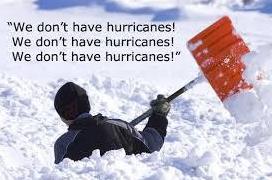
Pretty Tame Outlook, Compared to Previous Octobers
If you're not just a little bit paranoid you may not be paying attention. Minnesota's growing season is getting longer. That's not a computer model, that's reality. Fall lingers later, spring tends to arrive a few weeks earlier than it did 1-2 generations ago.
No early arctic smacks brewing yet, but mid-October can be wild & wintry at this latitude. According to NOAA records, pioneers at Fort Snelling were digging out from 11 inches of snow on this date in 1820. On this date in 1880 a freak blizzard buried Canby, Minnesota under 20 FOOT drifts that didn't melt until the following spring!
Nothing nearly that controversial in this forecast. Squeeze in leaf-raking chores this morning, because a surge of showery rain is likely this afternoon and tonight. We dry out behind a Sunday cold front with blue sky punching holes in stratus clouds; temperatures stuck in the 40s across much of the state.
You'll want to stick around for next week as a Pacific breeze lures the mercury into the 60s; even 70s late next week.
Considering we could, in theory, be hip-deep in snow drifts - I'm relieved.
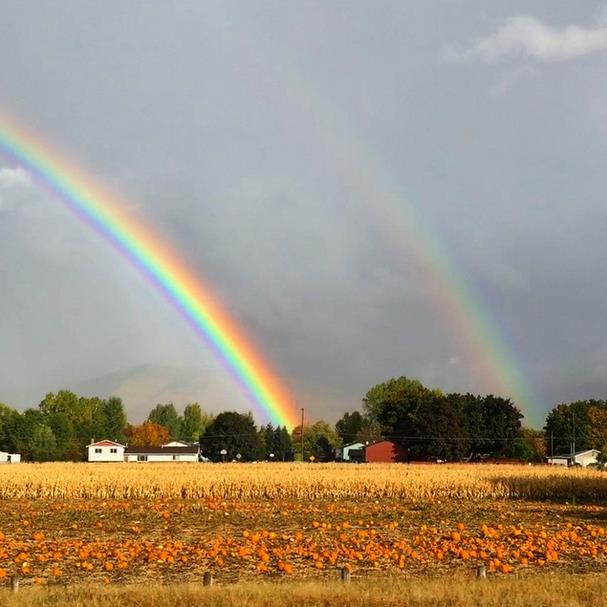
Ophelia Pushes Toward Ireland. By Sunday or Monday Hurricane Ophelia may lose most tropical characteristics, but damaging winds and power outages are still possible across the British Isles early next week.
Deadliest Week of Fires in California History. The New York Times has more detail.
Issued Friday, October 13th, 2017:
* There are now 31 confirmed deaths from the wildfires across California, making this the deadliest week of wildfires in state history. At least 3,500 structures have been destroyed, with more than 220,000 acres consumed. There are still at least 17 ongoing fires.
* An evacuation advisory has been put in place for parts of Napa for areas west of Highway 29 between Oakville Grade and Rutherford Road, alerting residents that they should prepare in case a mandatory evacuation is issued. The San Francisco Chronicle has a live blog running with the latest updated news information, including evacuations and updated fire information.
* The wildfires have caused the worst air quality ever recorded in the Bay Area, and air quality will continue to be in the unhealthy range into the weekend, causing health concerns.
* Fire weather conditions continue to be critical across California into the weekend, as strong winds and low humidity values will allow any ongoing wildfires (and any new fires) to spread quickly across the region.
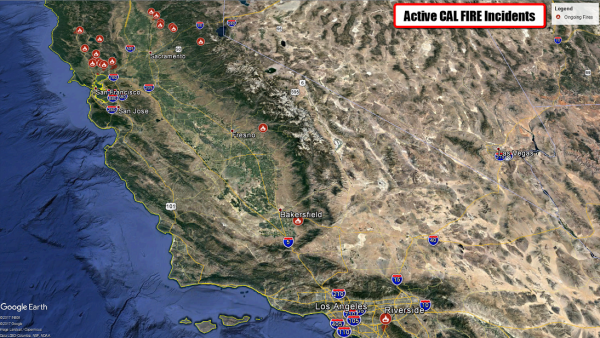
Map: CAL FIRE
CAL FIRE has also issued a statewide fire summary this morning, summing up the latest information on the fires.

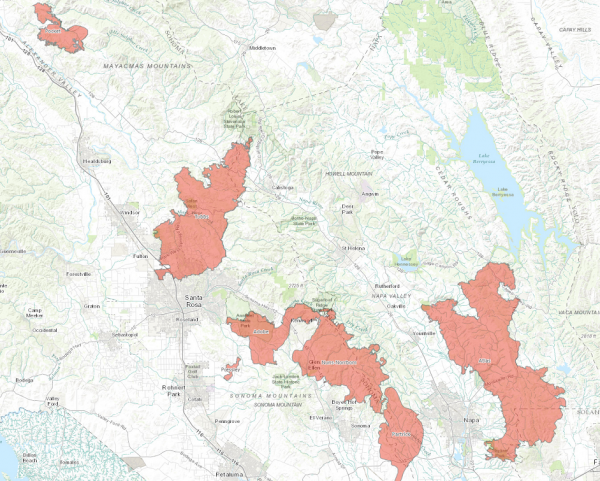
Both Maps: CAL FIRE
- Central LNU Complex
- Tubbs Fire: 34,770 acres – 25% contained
- Pocket Fire: 9,996 acres - 5% contained
- Southern LNU Complex:
- Atlas Fire: 48,228 acres - 27% contained
- Patrick Fire: 12,379 acres - 18% contained
- Norbbom/Adobe/Nuns Fires: 44,381 acres - 5% contained
- Pressley Fire: 473 acres - 10% containment

You can view an interactive map of this active wildfire from CAL FIRE.
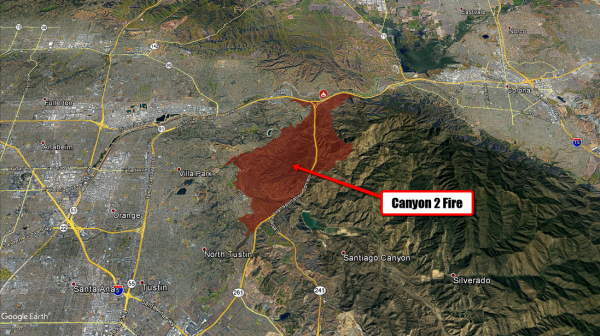
Map: CAL FIRE
Canyon 2 Fire. Progress continues to be made on the Canyon 2 Fire burning east of Anaheim. As of yesterday evening, the fire had burned ~9,000 acres but was 65% contained as favorable weather allowed firefighters to improve containment lines. More information on this fire can be found from local officials:
- City of Anaheim: http://www.anaheim.net/
AlertCenter.aspx?AID=Canyon- Fire-2-3 - City of Orange: http://www.cityoforange.org/
CivicAlerts.aspx?AID=145 - Orange County: https://www.ocgov.com/
CAL FIRE has more on the fires mentioned above, as well as the other ongoing fires across the state.
Air Quality Concerns. Air quality due to the numerous wildfires continues to be in the unhealthy range across parts of the Bay Area, with KQED reporting that the air quality in some areas of the Bay Area being the worst they have recorded on record. Due to this, the Bay Area Air Quality Management District has declared a Health Advisory and Spare the Air Alerts through the weekend.
AirNow has the latest air quality index numbers across California.


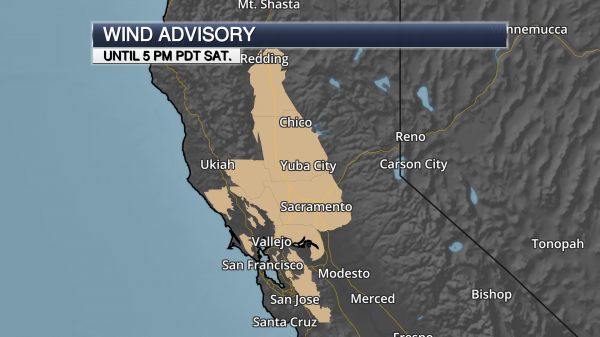




Meteorologist D.J. Kayser, Praedictix
"A Recipe for Disaster": Urban Growth Fuels Deadly California Wildfires That Challenge Traditional Firefighting Tactics. The Washington Post explains the challenge development brings: "...Stornetta
and his crew were fighting back the flames at Woodley Place, a line of
modest houses surrounded on three sides by wooded hills. The prevalence
of this kind of development — a low-density combination of homes and
wild vegetation — has increased in California in recent years, said
Jonathan Cox, battalion chief and spokesman for Cal Fire. Called
“Wildland-Urban Interface,” or “intermix” in firefighter parlance, these
environments are among the factors that have made the Tubbs fire in
Sonoma and Atlas fire in Napa so difficult to contain — along with five
years of brutal drought, powerful winds and resources stretched thin
from simultaneous fires around the state. Although hard-hit Santa Rosa
neighborhoods such as Coffey Park are more traditionally urban, intermix
areas are part of an upward trend throughout California. “Areas that
would 20 years ago have nothing now are interface environments,” Cox
said. “Take the sheer number of square acres that are involved with
intermix and wildland-urban spaces, combine that with the frequency and
intensity of fires increasing — it’s a recipe for disaster...”
House Approves $36.5 Billion Disaster Aid with Puerto Rico, Wildfires, Flood Insurance Funds. Insurance Journal has the story: "The U.S. House of Representatives on Thursday approved $36.5 billion in emergency relief for hurricane-hit Puerto Rico and other areas that have suffered recent disasters. In addition to the U.S. territory of Puerto Rico, which is recovering from devastation wreaked by Hurricane Maria, the bill will also provide funds for the storm-struck areas of Florida, Texas, and the U.S. Virgin Islands, and fire-ravaged California. The bipartisan bill sailed through the Republican-controlled House – approved by a 353-to-69 vote – just hours after President Donald Trump said that government response teams could not stay in Puerto Rico “forever...”
File image of Hurricane Irma: NASA.
Fall Color Update.
Colors are peaking from the northern suburbs into the Brainerd and
Alexandria Lakes area - peak color may be 7-10 days away for
southeastern Minnesota. Map credit: Minnesota DNR.

La Nina Watch Issued for Fall/Winter. Details via NOAA CPC: "For
the upcoming Northern Hemisphere fall and winter of 2017-18, a weak La
Nina is favored in the dynamical model averages ofthe IRI/CPC plume and
North American Multi-Model Ensemble (NMME). Several models indicate a
period of near-average Nino-3.4 values in the upcoming weeks, but then
predict reinvigorated growth of negative SST anomalies across the
equatorial Pacific Ocean. These forecasts are supported by the ongoing
easterly wind anomalies across portions of the Pacific Ocean and the
reservoir of below-average subsurface temperatures. In summary, La Nina
conditions are favored (55-65%) during the Northern Hemisphere fall and
winter 2017-18..."
CA Wildfire Toll Jumps to 31:
From Climate Nexus: Massive wildfires sweeping Northern California have
killed at least 31 people, making them the blaze the deadliest in the
state’s history. Officials warn that more deaths are likely as the
fires, which span 300 square miles, have yet to be contained. “We're not
even close to being out of this emergency," said Mark Ghilarducci, the
director of California's Office of Emergency Services. Fires have
destroyed at least 3,500 homes and businesses in California’s wine
country and have forced 20,000 people to evacuate since Sunday. Gov.
Jerry Brown said Wednesday that the “warming climate, dry weather and reducing moisture” contributed to the fires. (Fires: NPR, NECN, WUFT, ABC News, LA Times $, CNN, USA Today, Mashable, Pacific Standard, WSJ $, AP. Climate Links: CBS News, Vox News, InsideClimate News, MIT Tech Review, ClimateWire. Commentary: LA Times editorial $, Modesto Bee editorial. Background: Climate Signals.)
If You Had Only 5 Minutes to Evacuate, What Would You Take? An interesting though-experiment none of us hope to ever realize, courtesy of SFGate.com: "...Medical
supplies. It sounds obvious, but it's worth repeating. Pack first aid
supplies, ample quantities of any prescription medication you, your
family or your pets may require, and useful over-the-counter medicines
like pain relievers, anti-diarrhea medication, antacids or laxatives.
Glasses and contact lens solution are also critical for those who need
them, as well as menstrual supplies, infant formula and diapers as
needed. Consider bringing moist towelettes, garbage bags and plastic
ties for personal sanitation..."
Photo credit:
5 Things the Weather-Climate Community Needs in the Next NOAA Administrator. Dr. Marshall Shepherd weighs in at Forbes: "...The National Weather Service is a national treasure. Weather observations and forecasts impact almost every aspect of our daily lives. There has been an obvious tension in the past on the role of the private and public sector.
This makes many people nervous about the next NOAA administrator
(whomever it is). Will there be an attempt to undermine what I believe
is an inherent federal role to provide the foundational weather
information for our military, private stakeholders and the public? You
would be surprised at how many people say stuff like, "Why do we need a
National Weather Service when we have TV stations and private
companies?" Ummmm, helloooooo. This statement, in my view, is like
saying, "Who needs potato farmers when we have people that make french
fries and potato chips?" NOAA models, satellites, radar system and
personnel enable the capacity for our vital private sector and media
partners. These partners add value to the information so that it can be
consumed by people, Apps, businesses, the military and so forth..."

Katrina file image: FEMA.
Hurricane Season Isn't Even Over, But It's Already Secured Its Place in History Books. Here's an excerpt of an insightful post at Capital Weather Gang: "This year’s hurricane season isn’t over. It still has 50 days left, but it’s already one of the most terrible on record, which will be talked about and remembered for generations. Like other famous seasons — 1995, 2004 and 2005 to name a few — 2017 has had many storms and many significant landfalls. Impressive records are falling this year. In an average season, we would typically have seen 10 named storms, five hurricanes and two major hurricanes by Oct. 11. This year — far from average — there have been 15 named storms from Arlene in April through Ophelia in early October. Nine of those storms became hurricanes, and it just happened to be nine consecutive storms from Franklin to Nate. That’s only happened three other times that we know of..."
Map credit: "The entire coastline from Texas to North Carolina has experienced tropical-storm-force winds this year." (Laris Karklis/The Washington Post).
First 10-Hurricane Streak in Atlantic Since 1886. The New York Times provides perspective on a crazy year in the Atlantic basin.
Photo credit: "Homes in the Juana Matos community are surrounded by flood waters in Catano, Puerto Rico, one week after Hurricane Maria came through. Few in the territory were covered by flood insurance." Carlos Giusti AP.
The Plan to Launch Giant Wi-Fi Balloons Over Puerto Rico. Atlas Obscura reports on the ambitious idea: "With disaster relief efforts still in
crisis mode in Puerto Rico, a number of private companies and citizens
are doing what they can to help the island’s residents. While some are
providing food and other necessary materials, Project Loon,
a division of Alphabet’s X lab (formerly Google X), is trying to set up
temporary internet and cell service using giant balloons. As Futurism is reporting,
Project Loon has received expedited approval from the FCC to launch
wireless data-providing balloons over Puerto Rico and the U.S. Virgin
Islands as soon as possible. The goal of Project Loon is to provide
internet coverage to inaccessible or less developed parts of the world
by floating large balloons in the stratosphere, at about 65,000 feet.
The balloons carry signal relay points capable of communicating with
service providers on the ground—in a sense they are more or less
floating cell towers. According to Project Loon’s website, the balloons can stay up for as long as 190 days at a time..."
Photo credit: "One of Project Loon’s early balloon concepts in 2013." iLighter/CC BY 2.0
Some of NOAA's Satellites are Still Dependent on Floppy Disks. Marketplace has the jaw-dropping story: "...When
you get the data down from the satellite, it's only as good as where
you can send it," said Bill Carter, IT systems specialist at NOAA's
Satellite Operations Facility. Some of the machines are older than the
people working in the building. "A lot of the equipment is from 1986,
'87," said Carter, pointing out the openings for the 3.5" floppy disks,
which they still use. "If you do the proper maintenance, you can make
things last for a long, long time."
Photo credit: "Satellites dishes on the roof of the National Oceanic and Atmospheric Administration." Kimberly Adams / Marketplace.
Yellowstone Supervolcano Could Erupt Sooner Than We Thought. Here's What We Know. I thought we could all use a little cheering up; here's an excerpt from Fortune: "Did you know there’s a supervolcano in Yellowstone National Park? Maybe you’ve heard that it could erupt with much less advance warning than expected?
Researchers from Arizona State University spent weeks studying
fossilized ash deposits from the Yellowstone volcano and recently shared
their findings. The minerals in these deposits revealed that the
critical changes in temperature and composition preceding an eruption build up over a matter of decades,
rather than thousands of years as scientists originally thought. “It’s
shocking how little time is required to take a volcanic system from
being quiet and sitting there to the edge of an eruption,” Hannah
Shamloo, a graduate student at Arizona State University who worked on
the research, told The New York Times..."
Image credit: Live Science.
Could Cyber-Attacks Knock Out Lights in the US? Not So Easily. The Washington Post attempts to put our minds at ease: "...It’s easier to hack into emails and a front-end computer system than tap into industrial controls. That’s why, in theory, most energy companies isolate their regular workplace networks from high-security control rooms. The nuclear power industry, for good reason, is considered to be the best at such security practices. But some smaller and locally focused electricity providers fall short in creating an impenetrable wall around industrial controls, often referred to as an air gap. “There’s always some sort of a bridge, whether it’s a human being in their sneakers, or a wireless connection,” said Michael Daly, the chief technology officer for cybersecurity and missions at defense contractor Raytheon, based in Waltham, Massachusetts. “There’s no such thing as a totally air-gapped system...”
Photo credit: "In this Nov. 12, 2015, file photo, a concrete pole carrying feeder lines stands outside an electric company substation in the U.S. Hackers likely linked to the North Korean government targeted U.S. electricity grid workers in September 2017, according to a security firm that says it detected and stopped the attacks, which didn’t threaten any critical infrastructure. But the attempted breaches raise concerns." (Gerald Herbert, File/Associated Press).
Image credit: Climeworks.
These Conservatives Are Making a Case for Clean Energy. Here's a clip from The PBS NewsHour: "...Data from the Solar Energy Industries Association’s annual report showed fortune 500 companies such as Target, Apple and Costco are the top-10 corporate solar users, and there are now more than 9,000 solar businesses in America. According to the American Wind Energy Association (AWEA), the U.S. is the leading producer of wind energy in the world. With over 99 percent of all wind farms on private land, wind energy projects are now giving more than $245 million a year to American landowners, AWEA reported last year. Mariah Bastin, a member of the Washington D.C. Young Republicans, said she has seen this job influx in action. Bastin’s father grew up on a farm in Kansas and understood that money was often tight for agricultural communities. After her father retired a few years ago, the Bastin family moved to Colorado and saw sophisticated wind turbines popping up on farmland. Local farmers were actually able to make ends meet by selling wind power on their property. Because of this cooperation, wind energy in Colorado has increased from 1.5 percent to 17.3 percent since 2005 and accounted for three-quarters of all renewables used in the state in 2015 alone..."
Photo credit: "The solar industry employed 200,000 more individuals than the coal industry in 2016." Photo by the Georgia National Guard/via Flickr.
- It needs to literally energize its 1.4 billion people, both how they travel and how they power their homes.
- Its leadership feels compelled to do it in a cleaner way than the U.S. did. Air quality is at dangerously high levels across many of China's cities. People are seeing and feeling health repercussions of China's dependence on fossil fuel-fired cars and power plants in an acute way. Traditional air pollution, not climate change, is a big driver..."
Photo credit: Scribe.
Photo credit: "Collector Phil Snow donated his collection o f 26 Flexible Flyers to the Moorsetown, NJ Library." Joe Galbraith, Moorsetown Library.
TODAY: Clouds increase, rain arrives PM hours. Winds: E 8-13. High: 58
SATURDAY NIGHT: Showery rains linger. Low: 40
SUNDAY: Cooler and drier with peeks of sun. Winds: NW 10-15. High: 51
MONDAY: Bright sun, a good-looking day. Winds: SW 10-15. Wake-up: 38. High: 62
TUESDAY: Blue sky, distractingly nice. Winds: S 8-13. Wake-up: 47. High: 68
WEDNESDAY: Lukewarm sun, cooling off late. Winds: W 10-20. Wake-up: 54. High: near 70
THURSDAY: Plenty of sun, weather winning streak lingers. Winds: S 10-20. Wake-up: 51. High: 67
FRIDAY: I smell a 3-day weekend. Wow - plenty of sun. Winds: S 10-15. Wake-up: 54. High: 72
Climate Stories...
.jpg)
Americans Find Human Fingerprint in Extreme Weather: From Climate Nexus: The large majority of Americans (68 percent) think weather disasters are getting more severe, according to a new poll from the Associated Press-NORC Center for Public Affairs Research. Of those, 46 percent say human-caused climate change is to blame, while another 39 percent say it’s a combination of human-caused climate change and natural variability. Two-thirds of American disapprove of how President Trump is tackling climate change, and some 63 percent believe that climate change is happening now and the government needs to act. The findings were published shortly after Hurricane Ophelia became this year's tenth named storm, tying a record set in 1893. (AP, The Hill).
File images: Climate Nexus.
Climate Change Will Always Hurt Poor People The Most. Gizmodo explains why: "...Stefanie Sarnat at Emory University has studied the effects of both extreme heat and air pollution on Atlanta. Heat leads to more emergency room visits among the elderly, as well as those susceptible to renal disease and asthma, she explained. Higher temperatures can also lead to more emergency room visits for fluid and electrolyte imbalance. It’s difficult to weed the injustice out of the dataset, the poor are more susceptible to diseases like asthma, diseases which could face consequences from the increased heat. Additionally, she noted the poor may have worse access to care, making heat-related exacerbations even worse...
Illustration credit: Angelica Alzona/Gizmodo.

First Frost Coming Later. WXshift takes a look at long-term trends, for the Twin Cities and the nation: "According to the EPA, the growing season is now nearly two weeks longer on average across the U.S. compared to the beginning of the 20th century. While this may delight warm-weather lovers, warmer overnight temperatures can reduce productivity and quality of grains and fruits, which might increase their costs at the supermarket. Warmer average temperatures lead to an increase in the frequency of extreme temperatures, which can shift the geographical areas where certain crops have historically grown best, potentially causing problems for farmers. Warmer temperatures could also prevent necessary plant-pollinator interactions from occurring, due to the potential shift in ecological cues, which would affect the delicate balance between species. Going longer without a frost also means that more pests survive into the winter to damage or destroy crops...."
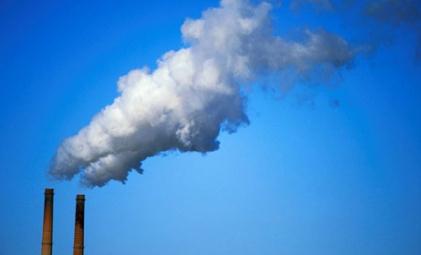
Florida State Researchers Link Declining Bee Populations With Climate Change. WGCU News has the story: "A Florida State University study links declining bumble bee populations with climate change. The researchers examined three bumble bee species in the Colorado Rocky Mountains and found warmer temperatures are affecting flowers, the animals’ food source. Lead investigator Jane Ogilvie considers the findings a warning for other places like Florida, where she says the issue is not as well-studied. “There could be subtle changes in how flowers are distributed in a place like Florida that could have these knock-on effects on pollinators...”
Photo credit: NPR.
Mysterious Hole Larger Than Maryland Has Reappeared on Antarctic After 42 Years. Business Insider explains: "A mysterious 'hole' larger than Maryland has reappeared in the middle of Antarctica after 42 years. Scientists aren't sure how it got there. But this isn't the first time it's appeared. The hole is a type of polynya. Polynyas are a region of open water surrounded by sea ice. But the Weddell polynya is unlike any other. While most polynyas form near the shore, this polynya is located hundreds of kilometers from the coast. Scientists first saw it in 1974. Back then, the opening was as large as Oregon. But in 1976, the opening closed up seemingly for good. Then, in 2016, a NASA satellite spotted a small opening. It was the first sighting of the polynya in over 40 years. Since then, the opening has grown considerably larger. Now, it's large enough to fit Maryland..."

No comments:
Post a Comment